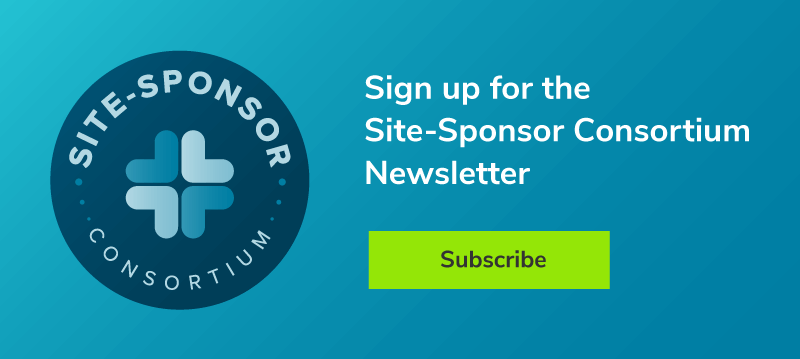The State of Clinical Trial Activation at Sites
Study activation is a necessary part of a clinical trial but can be rather difficult to coordinate efficiently. There is a fine line between crafting a budget fit for an organization, negotiate it with the sponsor, receive necessary approvals, and determine if the protocol is feasible at your site, all while ensuring this is done in an efficient timeframe so sites can meet financial and accrual targets. So, how does a site balance these tight, quick turnarounds while meeting trial goals?
In order to gain a better understanding of study activation roadblocks, Advarra conducted the Study Activation Report Survey in late 2020. This report reflects survey findings, illustrating key factors affecting study activation, and provides suggestions and solutions to sites wanting to improve their study activation process.
The infographic below highlights what our survey participants had to say about the study startup process at their organization.
Download a larger version of the infographic
The State of Clinical Trial Activation at Sites
When conducting the study activation survey, we categorized five areas of protocol feasibility and identified items in each area indicating successful activation practices. These included:
- Financial viability
- Resource optimization
- Activation timeline length
- Accrual assessments
- Protocol feasibility assessments
Determine Financial Viability
When asked, 11% of respondents reported financial feasibility was not part of their study activation process.
A study’s financial feasibility is informed by 1) the budget negotiation process and 2) the Medicare Coverage Analysis (MCA).
The budget negotiation process:
- Takes a long time, with 63% of respondents indicating negotiating fees were a reason for activation hold up
- Is held up on the sponsor end too, with half of the respondents stating their sponsor’s response time is slow
- Can be improved through partnerships with experienced negotiators who are knowledgeable about budgeting and focused on this task alone
The MCA process:
- Determines what might be covered by a participant’s health insurance plan
- Mitigates or eliminates billing compliance risks
- Is required to understand the true cost of a study, but 46% of respondents indicated they do not complete MCA at their site
However, study activation costs can be negotiated. Sites use a variety of strategies to negotiate startup costs, including:
- A single bundled startup fee
- Itemized startup costs
- A hybrid method with itemized and bundled costs
Optimize Resourcing
A protocol feasibility analysis needs to include staff and infrastructure resource evaluation, including what is necessary to activate the trial. Additionally, staff expertise needs to be accounted for.
However, the largest pain point indicated across all organization types was research team staff turnover, with 20-25% of academic medical centers (AMCs) and health system-based sites reporting this as their top staff-related issue related to IRB. Additionally, 47% of AMCs and universities indicated number of staff is a sticking point relating to staffing and budget negotiation.
What can we do to improve staffing challenges?
- Augment and outsource to reduce research staff workload. Working with an external partner to complete specialized tasks allows staff to focus on the tasks requiring an onsite presence
Beyond staff resourcing, sites should consider:
- Facilities and infrastructure required to conduct clinical trials
- Infrastructure shared by multiple investigators and studies
- The cost to license and maintain systems
Survey findings concluded if sites ask for these costs, they are more likely to receive them. 75% of respondents who included CTMS costs in the budget received payment. More so, 97% of respondents including eReg costs in the budget received payment.
Shorten Activation Timelines
Sites conducting clinical trials naturally compete for accruals. Research sites that do not open studies promptly miss out on enrollment opportunities.
While 99% of respondents provided a turnaround time for overall study activation, 35% reported activation timelines of 91 days or more. Only 19% achieved efficient timelines of 30 days or less.
Study activation timelines varied by organization type and research portfolio
- Investigative sites more likely reported shorter activation timelines, with 80% reporting 60 days or fewer,
- 34% of hospital/health system-based sites reported activation within 60 days, and
- 21% of AMCs and universities completing activation within 60 days
Regardless of organization type, smaller portfolios of less than 100 industry-sponsored trials more likely reported turnaround times under 30 days. Organizations with larger portfolios of more than 300 industry-sponsored trials reported turnaround times of at least 121 days.
In regard to sub-processes within the study activation process:
- 19% reported budget negotiation turnaround times of under 30 days
- 62% indicated MCA taking longer than 14 days
- 54% stated internal IBC review took longer than 30 days
- 25% reported IRB turnaround times of over 30 days
What can be done in tandem with IRB review? 81% of survey respondents indicated ancillary reviews such as conflict of interest or radiation safety review are done at the same time as IRB review, but 35% of organizations do not allow simultaneous IBC and IRB review. Additionally, 13% of respondents require a finalized budget and contract before IRB submission occurs.
When goal setting:
- 54% indicated their institution had no specific goal for IRB turnaround time
- 28% indicated they met their budget negotiation goal
- 88% reporting there is no process goal for IBC turnaround time
- 72% stated there is no process goal for MCA turnaround time
When meeting goals, 44% of respondents indicated they met IRB approval and MCA goals, and 28% reported they met their budget negotiation goal. When meeting IBC goals, 64% said they met their turnaround time.
Accurate Accrual Assessments
At the site level, 20-50% of clinical trials accrue zero participants, therefore wasting time and effort put forth by study staff.
While 92% of respondents evaluate the pool of participants during study activation, 32% of these respondents don’t evaluate past study successes or failures. Evaluating past performance can enable sites to:
- Adopt successful recruitment strategies
- Illuminate screen failure rates
- Estimate staff and investigator effort
Conduct Early Feasibility Assessments
What is protocol feasibility?
Protocol feasibility is the process of reviewing the logistical aspects of a clinical trial and determining if the site’s available resources are sufficient for conducting the trial. Conducting a feasibility assessment includes assessing:
- Financial viability
- Available resources
- Past performance and ability to accrue
- Potential pitfalls
Sites should maximize their chances of trial success by answering the following during the trial evaluation period:
- Is it financially viable to run the study at your site?
- Do you have sufficient available staff to conduct the study?
- Do you have the infrastructure required to conduct the study?
- Can you activate the study in a timely manner?
- Can you meet the required accrual goal?



